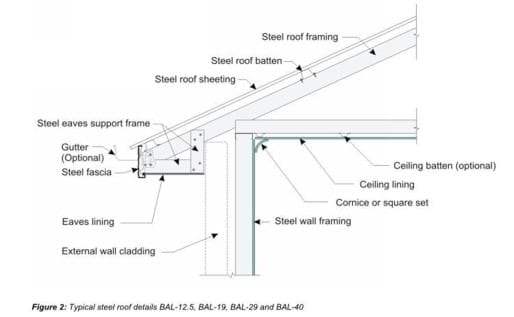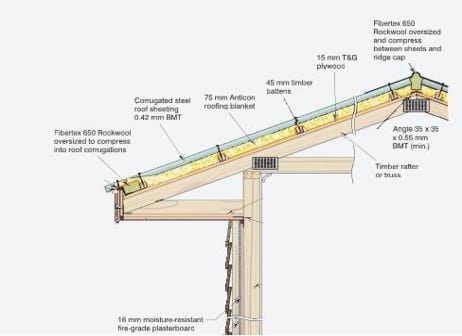Approaches to construction
There are two main approaches to construction, traditional and prefabrication or modular.
Traditional
The traditional approach is for a structure to be erected on the development site from the ground up using timber or steel framing with brick or other suitable external cladding, or solid brick or concrete walls. Depending on the site conditions, concrete slabs, or sub floors on posts or other foundations are all possible.
Steel framed construction is an alternative to timber framed construction. There are specific standards for steel-framed construction in bushfire-prone areas with some advantages due to the non-flammability of steel framing and resistance to termite attack.
Assuming that there are no complex geotechnical issues affecting the site, at higher BAL levels glazing or window treatments will generally be the biggest cost variable over sites located in less risky locations.
Modular or prefabrication
The main alternative is prefabricated construction where the main parts of the structure are assembled off-site and then delivered to the site and joined together.
Travel time to a construction site may be a significant factor in overall build cost. In traditional approaches, builders will either need to stay on-site (if remote site), or have access to accommodation within reasonable distance to the construction site.
In modular construction, preparation of the prefabricated elements can proceed, generally in a factory setting, while site preparation and footings are prepared on-site.
There is potential time saving because both parts of the build process can occur simultaneously and preparation of modular units in a factory is not impacted by weather.
However, with modular or prefabricated construction, site access for potentially large premade components, trucks and crane access will be an important consideration that should be addressed in the conceptual and planning phase. Consider the route delivery trucks will take including road and bridge widths and load capacity, and vegetation or utilities that may impact delivery.
On steep sites or inaccessible sites, modular units can be helicoptered into position if road and crane access is not feasible. This may be a cost-effective approach depending on site considerations.
Builders and designers can provide advice on what approach to general construction makes the best overall sense and is the most practical, efficient and cost-effective for your site while achieving a bushfire resilient dwelling.
If you have an existing structure that is still habitable, or is being repaired, it is well worth reading the CFA guide to retrofitting existing houses to improve bushfire resilience.
Think non-combustible
Updated

